Recently, STH covered the Synology DS1618+ 6-Bay NAS launch. Many STH readers manage remote branch offices or have home labs. We were excited to see the new unit is powered by a quad-core Intel Atom C3538 SoC which is Intel’s newest series in this segment. The Synology DS1618+ also has an expansion PCIe slot which gives the capability of adding either a dual M.2 SATA SSD adapter for fast cache needs or 10GbE network card which speeds up moving large files across your network. After the launch, Synology sent a unit for us to review which is the focus of our piece.
The Synology DS1618+ targets SMB users, remote branch office service providers, and creative professionals who want to upgrade their local networks storage.
Synology DS1618+ 6-Bay NAS Specs
Here is the official spec table from Synology. We are going to cover most of these points in our review.
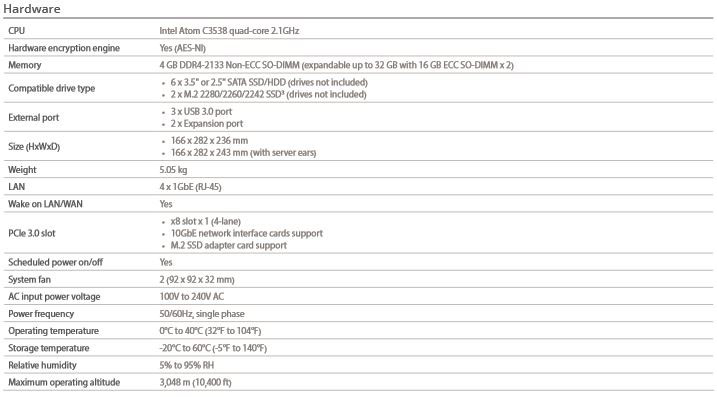
For the full specifications of the DS1618+ head over here. We are going to mostly look at this unit as a NAS unit, but the power is there to do much more than that. The Intel Atom C3538 is a very capable SoC and significantly more than one needs for a simple storage appliance. The Synology DS1618+, which comes with 4GB of non-ECC DDR4 SODIMM RAM. This is upgradable to 32GB of memory. Between the SoC, the RAM capacity, and the Synology DSM software suite, users are putting not just storage but also edge applications on these Synology devices.
Synology DS1618+ 6-Bay NAS Overview
The Synology DS1618+ comes with standard packing that we have seen in other Synology NAS retail boxes; shipping protection with foam inserts inside a heavy duty box protect the NAS well. This is important if you are shipping these to retail locations or shops where they are likely to get jostled in shipping and on site.
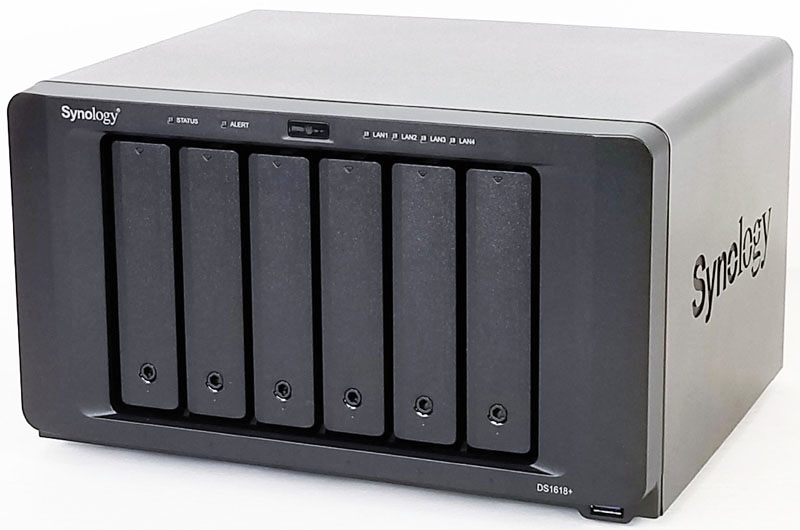
The Synology DS1618+ looks very much like other NAS’s in Synology’s line up; the main difference is the extra two drive bays vs. a 4-Bay unit. LED’s located at the top of each drive tray give drive activity status indication. A power button is at center top with blue LED showing power on status. Addition LED’s at the top highlight Status, Alerts, and LAN indicators. LAN indicators at the top do not show network expansion cards. At the bottom right side of the DS1618+, we find a USB 3.0 port.
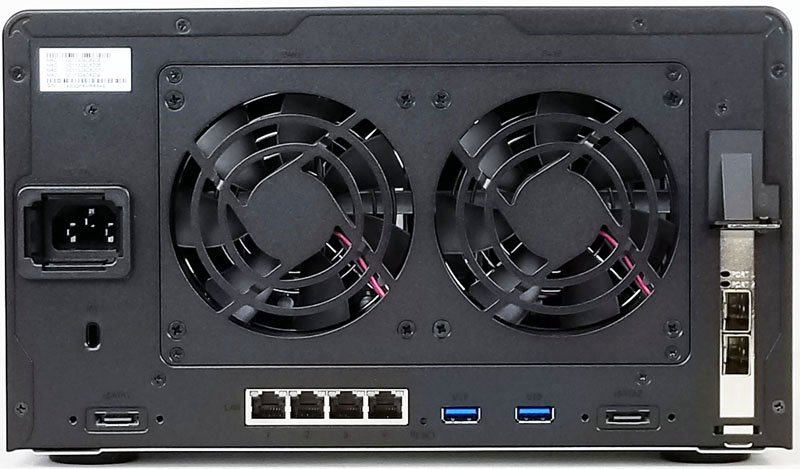
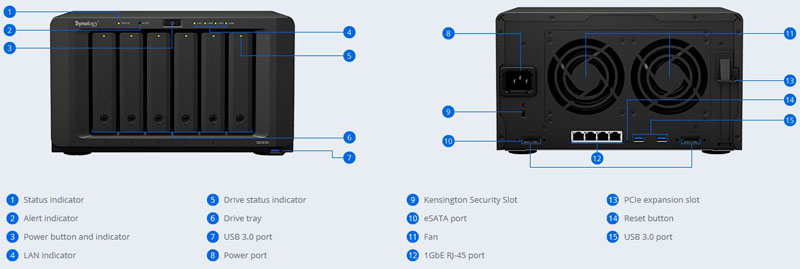
That the back of the unit we find two 92mm cooling fans taking up most of the space. The graphics outline all the functions found on the DS1618+
The Synology DS1618+ uses a standard power cord vs. a power brick we have seen with other units. We prefer the power cord as it will stay firmly connected and not come unplugged when moving the NAS or when things around the NAS are moved.
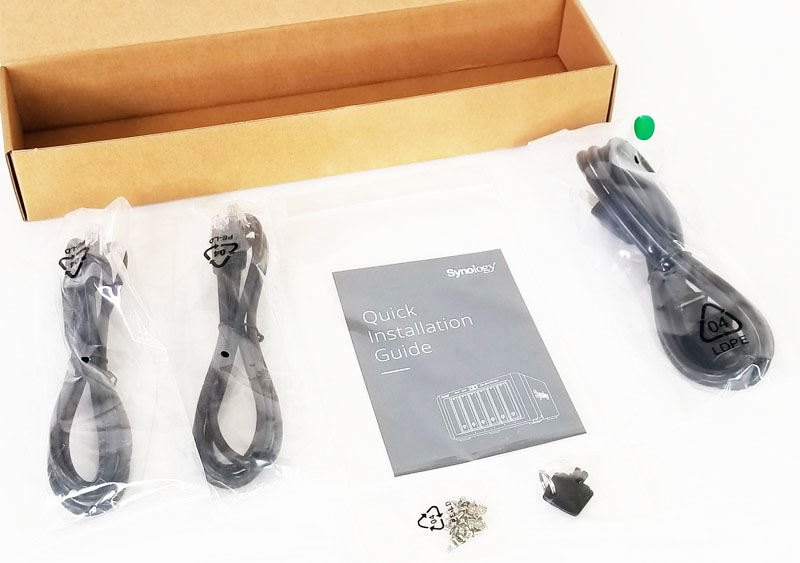
Accessories included with the DS1618+ include:
- DiskStation DS1618+ enclosure
- Quick Installation Guide
- AC Power Cord
- 2x Ethernet Cables
- 2x Drive Bay Lock Keys
- 1x bag of mounting screws
Overall, this is a solid set of hardware for a NAS in this category.
Synology DS1618+ 6-Bay NAS Installation
Let us move on to installing our hard drives. Installing 3.5” hard drives is a tool-free process. Slip the HDD into the tray with SATA ports facing away from the front levers and snap in the plastic retaining bars.
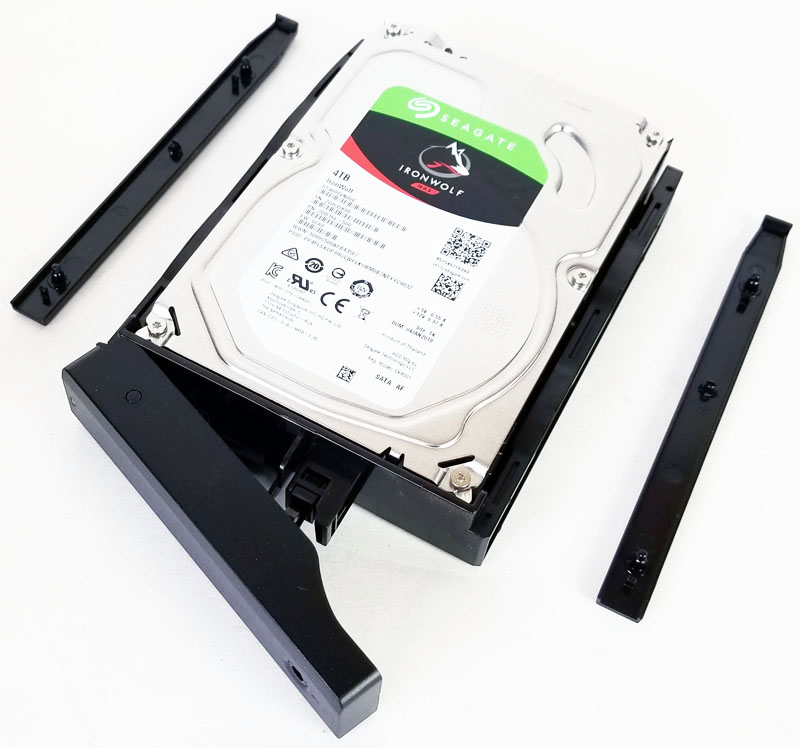
This method is very straightforward and it is a differentiator as one does not require a screwdriver to service the unit. It took a mere few minutes to install all six hard drives into the trays and inserted in the DS1618+. Hard drives can be locked using the supplied keys.
Physical installation consists of snapping in drives, plugging in the network and power cables and you are ready to get going.
Synology DS1618+ 6-Bay NAS Management
Getting our DS1618+ up and running follows the same process as the Synology DS918+ we reviewed previously.
On your computer desktop download and install Synology Assistant, this will then bring up a list of Synology products on your network.
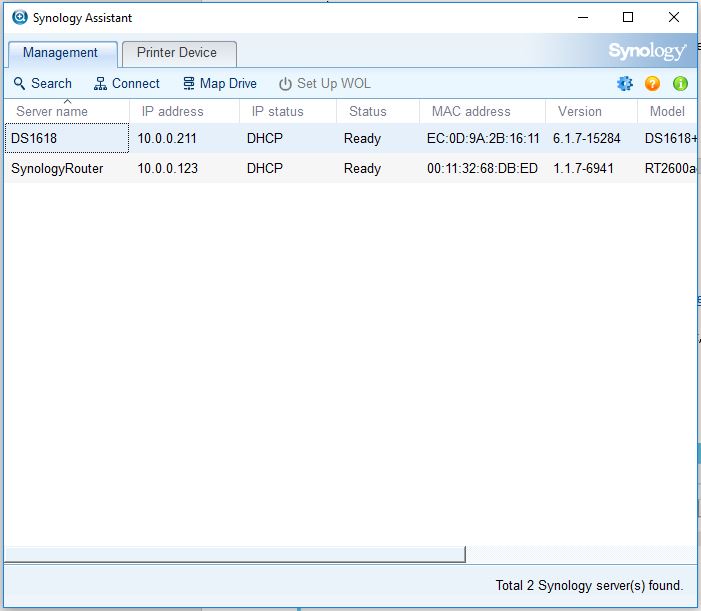
Here we see Synology Assistant showing our Synology products on our network. Our DS1618+ shows up as DiskStation, in our picture we had already set up and named our NAS. After clicking on the DiskStation, a series of setup procedures will be available to walk you through getting the DS1618+ up and running. The entire setup procedure only takes a few minutes to complete.
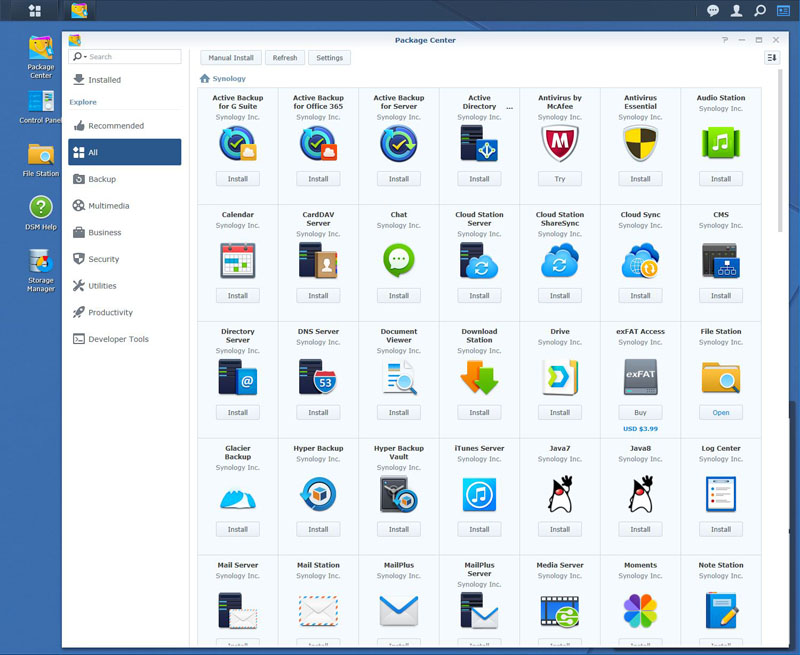
Add-On packages offer great features to install on your NAS; these expand the capabilities of your NAS. Synology DSM is perhaps the industry standard for NAS software; it’s simple to get up and running and offers a very user-friendly desktop to operate the NAS. Synology also keeps an impressive number of add-on packages that cover just about every application you could want. For a complete list head over to Synology Add-On Package page. You can also try out Synology’s latest DiskStation Manager (DSM) here.
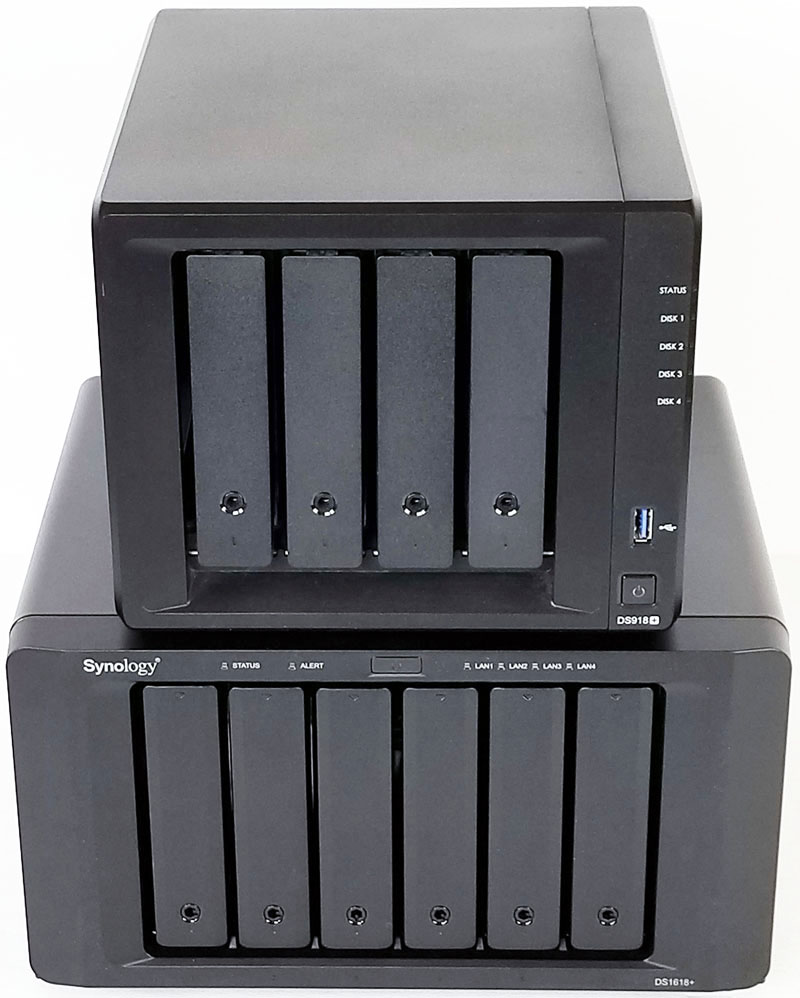
The DS1618+ is somewhat larger than the DS918+ and weighs more, the design looks identical between the two units, and they both operate the same.
In our tests, we will compare the Synology DS1618+ to a DS918+. A common scenario for SMB service providers is one where they have different field storage requirements. With the ease of Synology administration and DSM commonality, we see many deployments where an SMB IT provider will need to choose between a 4-bay and a 6-bay model for a site. Comparing the two NAS units gives us some idea of how the step up in the model range translates to better performance.
Next we are going to look at the performance and give our final thoughts.

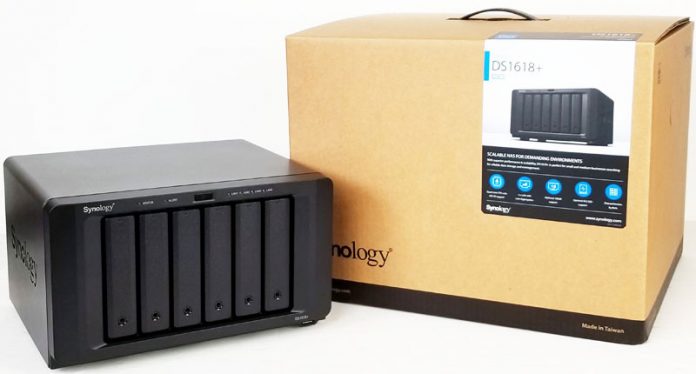


As much as I like the software interface of synoloy, QNAP is the way to go these days with their superior hardware.
I keep going back and forth deciding if I want to replace my DS412+ with a DS1618+ or just build a FreeNAS box for home. FreeNAS would be a lower TCO, but I do like the Synology software…. but that price tag.
Worth noting that the 918+ is also capable of supporting 32GB of DRAM, just not “officially” – you can chuck a pair of 16GB DDR4L SODIMMs in no trouble.
It would be interesting to compare performance using either 10Gbit networking or the M.2 caching expansion card. Would be really nice if Synology had two slots available though.
Couple of things I’ve come to find deploying Synology gear.
– They have zero dust protection and are a complete bitch to take apart to clean.
– Synology have a bit of a disconnect between their push to support virtualization and the CPU they use.
I do like DSM 6.2 though – wish they would license it for general x86 use.
I’ve had great luck with 2nd hand Synology boxes at deep discounts (eBay) for basic storage. My 1812+ units have been running 24/7 (unaffected by AVR54) for years and have the latest updates. The software is wonderful.
I agree the new hardware costs are a bit steep, and you can get better hardware elsewhere, but the whole setup is bulletproof.
Did you use 4 or 6 drives in your testing?
So the backplane is sas from pictures. But does the controller not support sas drives?